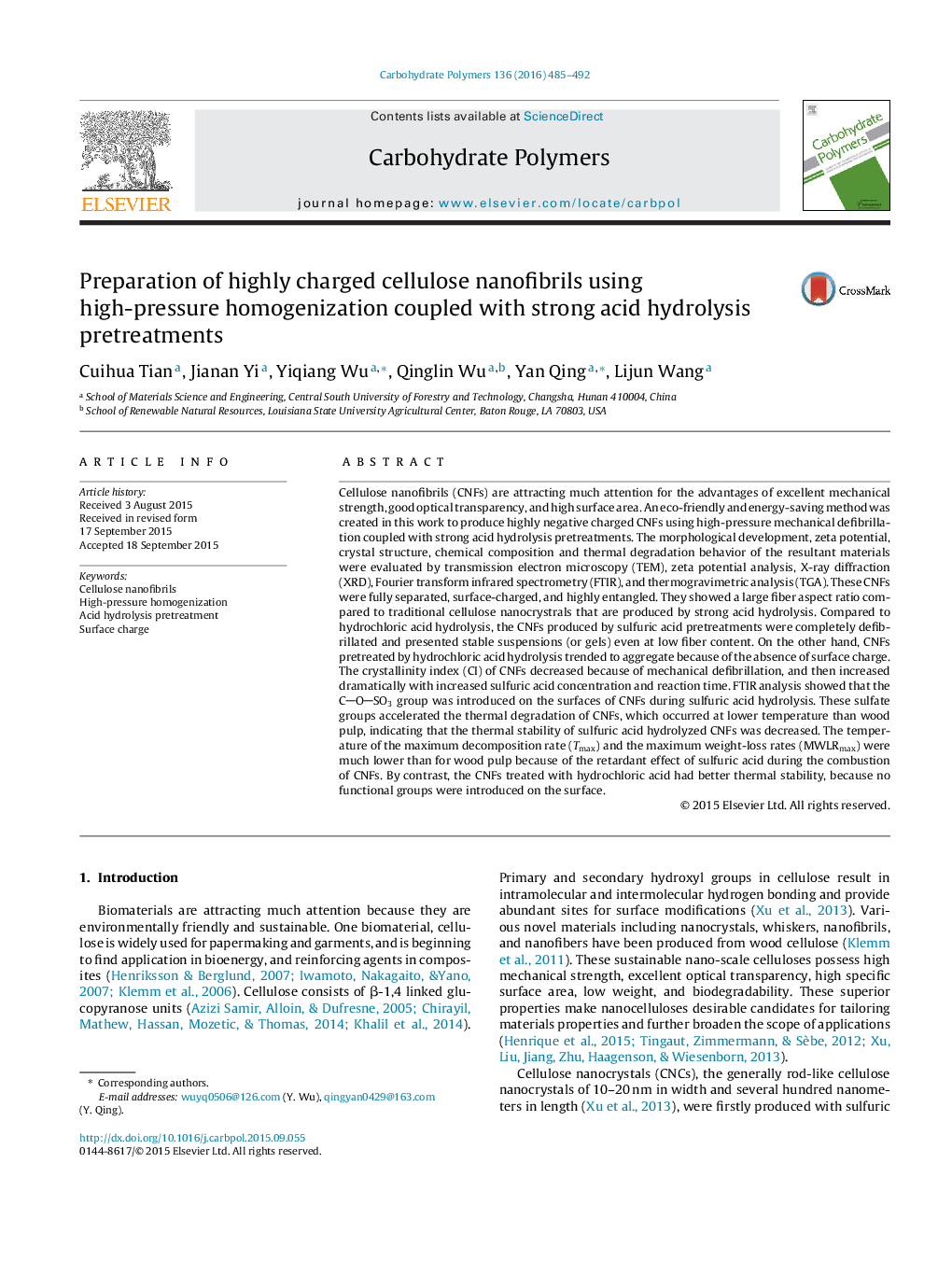| کد مقاله | کد نشریه | سال انتشار | مقاله انگلیسی | نسخه تمام متن |
|---|---|---|---|---|
| 7786527 | 1500622 | 2016 | 8 صفحه PDF | دانلود رایگان |
عنوان انگلیسی مقاله ISI
Preparation of highly charged cellulose nanofibrils using high-pressure homogenization coupled with strong acid hydrolysis pretreatments
ترجمه فارسی عنوان
آماده سازی نانوفیبریلهای سلولز با اتهام بالا با استفاده از همگن سازی فشار بالا همراه با پیشگیری از هیدرولیز اسید قوی
دانلود مقاله + سفارش ترجمه
دانلود مقاله ISI انگلیسی
رایگان برای ایرانیان
کلمات کلیدی
نانوفیلترهای سلولز، همگن سازی فشار بالا، پیش درمان هیدرولیز اسید، سطح شارژ،
موضوعات مرتبط
مهندسی و علوم پایه
شیمی
شیمی آلی
چکیده انگلیسی
Cellulose nanofibrils (CNFs) are attracting much attention for the advantages of excellent mechanical strength, good optical transparency, and high surface area. An eco-friendly and energy-saving method was created in this work to produce highly negative charged CNFs using high-pressure mechanical defibrillation coupled with strong acid hydrolysis pretreatments. The morphological development, zeta potential, crystal structure, chemical composition and thermal degradation behavior of the resultant materials were evaluated by transmission electron microscopy (TEM), zeta potential analysis, X-ray diffraction (XRD), Fourier transform infrared spectrometry (FTIR), and thermogravimetric analysis (TGA). These CNFs were fully separated, surface-charged, and highly entangled. They showed a large fiber aspect ratio compared to traditional cellulose nanocrystrals that are produced by strong acid hydrolysis. Compared to hydrochloric acid hydrolysis, the CNFs produced by sulfuric acid pretreatments were completely defibrillated and presented stable suspensions (or gels) even at low fiber content. On the other hand, CNFs pretreated by hydrochloric acid hydrolysis trended to aggregate because of the absence of surface charge. The crystallinity index (CI) of CNFs decreased because of mechanical defibrillation, and then increased dramatically with increased sulfuric acid concentration and reaction time. FTIR analysis showed that the COSO3 group was introduced on the surfaces of CNFs during sulfuric acid hydrolysis. These sulfate groups accelerated the thermal degradation of CNFs, which occurred at lower temperature than wood pulp, indicating that the thermal stability of sulfuric acid hydrolyzed CNFs was decreased. The temperature of the maximum decomposition rate (Tmax) and the maximum weight-loss rates (MWLRmax) were much lower than for wood pulp because of the retardant effect of sulfuric acid during the combustion of CNFs. By contrast, the CNFs treated with hydrochloric acid had better thermal stability, because no functional groups were introduced on the surface.
ناشر
Database: Elsevier - ScienceDirect (ساینس دایرکت)
Journal: Carbohydrate Polymers - Volume 136, 20 January 2016, Pages 485-492
Journal: Carbohydrate Polymers - Volume 136, 20 January 2016, Pages 485-492
نویسندگان
Cuihua Tian, Jianan Yi, Yiqiang Wu, Qinglin Wu, Yan Qing, Lijun Wang,
